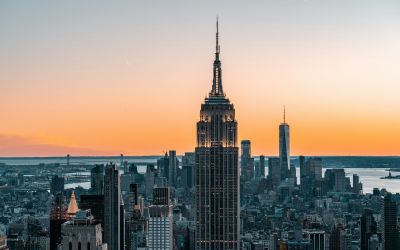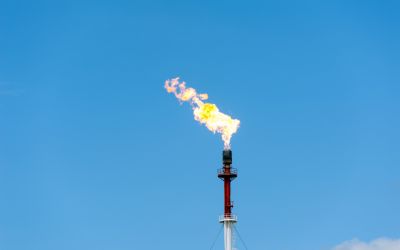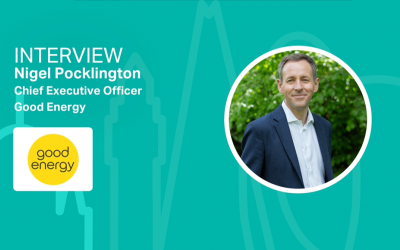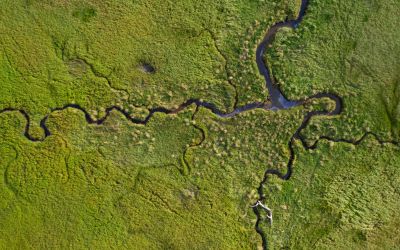Dispatch from Denver: Making Climate Change THE Issue
Author and environmental leader David Orr is upset about the corruption of language in the United States. He doesn't like how some groups have co-opted phrases like "pro-life" and "conservative" to promote their own political agendas, which often have little to do with saving lives or acting conservatively. But the greatest travesty, he says, is the way Americans throw around the term "global warming."
Author and environmental leader David Orr is upset about the corruption of language in the United States. He doesn't like how some groups have co-opted phrases like "pro-life" and "conservative" to promote their own political agendas, which often have little to do with saving lives or acting conservatively. But the greatest travesty, he says, is the way Americans throw around the term "global warming."
Climate change panel. From left to right are Betsy Taylor of 1Sky, Lester Brown of the Earth Policy Institute, Randy Hayes of the Rainforest Action Network, author David Orr, and Chuck Kutscher of the National Renewable Energy Laboratories. © Jeffrey Allen / OneWorld.netClimate change panel. From left to right are Betsy Taylor of 1Sky, Lester Brown of the Earth Policy Institute, Randy Hayes of the Rainforest Action Network, author David Orr, and Chuck Kutscher of the National Renewable Energy Laboratories. © Jeffrey Allen / OneWorld.net"This isn't 'global warming,'" he exclaims with an air of severity and deep concern. "This is planetary destabilization. And it's already begun. The question is: How do we arrest this before it gets to the point of catastrophe?"
Orr joined a panel of top climate scientists and activists this morning at The Big Tent, a new media and activist hub just steps away from the action inside the Democratic National Convention here in Denver this week.
Drawing from material in his latest book, Plan B 3.0: Mobilizing to Save Civilization, Earth Policy Institute founder Lester Brown explained the scope of the impending planetary destabilization as well as what needs to be done to avert catastrophe and what is scientifically achievable now and in the near future.
The Scope
There is mounting concern about the melting of the Greenland ice sheet, Brown said, explaining that scientists recently witnessed a glacier there flowing at 2 meters an hour -- not the typical 2-3 meters per year they're used to seeing. If that sheet collapses into the ocean, the Earth will experience a 23-foot rise in sea level, Brown said, noting that massive relocations of populations would result -- all across the planet.
Jacabamba Glacier, Peru, in 1980 (left) and 2002 (right) © LynasJacabamba Glacier, Peru, in 1980 (left) and 2002 (right) © Lynas Scientists are also increasingly concerned about the melting of glaciers in Asia's Himalaya range. Those glaciers feed the major rivers of Asia, and as their seasonal flows are diminishing, so are the hopes of farmers and villagers downstream, who rely on those rivers to raise crops and sustain human life across the continent of 4 billion people.
And last Sep. 16, scientists recorded the annual minimum amount of sea ice in the Arctic region at a level 22-percent lower than it ever was before, explained Chuck Kutscher, a research engineer working on renewable energy at the National Renewable Energy Laboratory in Colorado. Those numbers, according to Kutscher, are "off the charts."
"The Earth could be free of summer Arctic sea ice within our lifetime," Kutscher added. "This has not happened as far as we know in 130,000 years -- as long as human beings have existed on the planet.
"If you had a gauge in your car reading in the red zone, how long would you feel comfortable driving down the highway like that? That's where we are now."
Added Orr: "This issue is threatening our life, liberty, and property."
What Needs to Be Done
Many politicians are talking about cutting carbon emissions by 80 percent by 2050. They say this is what is politically feasible. Brown and many other top scientists have looked at the problem in a different light, asking not what is "feasible," but rather what is necessary to avert global catastrophes. Working from that, he says, we can shift the bar on what is politically "feasible."
A brief example illustrates Brown's point. Shortly after the Japanese attack on Pearl Harbor in 1941, U.S. President Franklin D. Roosevelt laid out massive arms-production goals and asked the automobile industry to lead the effort. Most industrial leaders thought the targets were unreachable, but Roosevelt shifted the bar on what was feasible by taking bold action, explained Brown. "He said, you don't understand, we're going to ban the sale of new automobiles in this country," which freed up the industry to fully join the war effort.
Instantly, a previously inconceivable goal became "feasible," and all the arms productions goals were exceeded within a matter of months, said Brown, who has been described by the Washington Post as "one of the world's most influential thinkers."
So what do scientists say is necessary to avert planetary destabilization today? According to Brown, the scientific research now shows that an 80-percent reduction in carbon dioxide emissions is needed not by 2050, but by 2020. And Brown and his colleagues say it can be done.
What Can Change Right Now
"If we were to move to the most efficient lighting technologies available today, we could reduce electricity demand by 12 percent," Brown says, noting that a worldwide effort to "ban the bulb" would allow the immediate closure of 270 coal-fired power plants.
There is a growing grassroots movement opposing the construction of any new coal-fired power plants in the United States, Brown said, adding that we may be at a "tipping point" on coal-fired energy.
Kutscher says energy efficiency can be as important a tool in reducing U.S. carbon emissions as a switch to renewable energy. He believes that energy efficiency measures can keep U.S. emissions from growing further, and a switch to renewables -- generating vastly more energy from cleaner sources like the wind, sun, and Earth's heat -- can provide the large emissions cuts needed to avoid the catestrophic consequences of climate change.
"In the new energy economy, we see 40 percent of the world's electricity coming from wind," Brown added. "That would require building roughly a million and a half wind turbines over the next dozen years. Now a million and a half may sound like a lot, but we make 65 million cars a year."
And what about cars: The United States consumes more gasoline than the next 20 countries combined, Brown said. But he believes U.S. driving habits don't have to change to stabilize the climate.
"The answer is plug-in hybrids," he explained, referring to automobiles that use gas-electric hybrid engines and can be plugged in when not in use to allow them to travel considerable distances without using any gasoline at all. Five companies are close to bringing these cars to market, Brown said, noting that Toyota may be selling a version next year and GM could have a plug-in hybrid on the market in 2010.
Algeria, which is currently planning to develop 6,000 megawatts of solar-energy generating capacity to export to Europe, has enough solar energy in its vast deserts "to power the world economy," Brown said. "I mention that just to give a sense of how much renewable energy there is out there. Three states in the U.S. -- Kansas, North Dakota, and Texas -- have enough energy capacity to power the whole country."
Read full article on the OneWorld website
Source: OneWorld website






